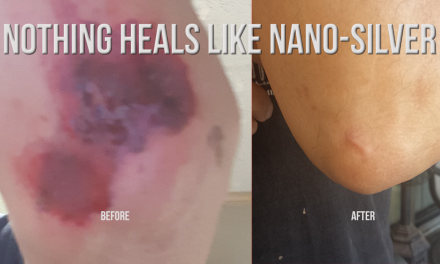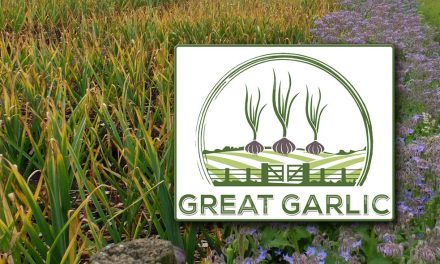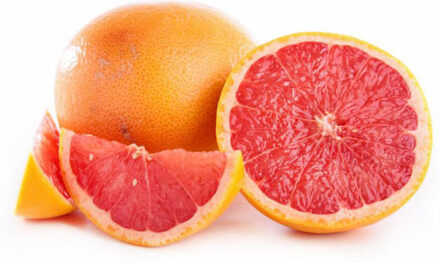Modern medicine often can perform marvels in treatment at the hospital, no doubt about it. Likewise, antibiotics and other pharmaceuticals frequently can save us from conditions that in a previous century would have been fatal. Missing, however, as most of us can attest either from personal experience or from having witnessed the post-hospital recovery of relatives and friends, are good options for supporting healing and recovery once medical treatments are over. “Taking it easy” in terms of exertion and food choices (“regular diet” or “special diet” as required) too often is the limit of available advice. Those interested in a catalog of standard medical advice might consult, “Managing the Adverse Effects of Radiation Therapy” at http://www.aafp.org/afp/2010/0815/p381.html. Conspicuously absent are solutions for the fatigue that is characteristic of recovery from chemotherapy and radiation.
Traditional medical systems around the world are much more focused on convalescence from illness and injury. Broths and soups are at home in European traditions, of course. In Indian and Chinese culture these variously are enriched with special herbs and spices. For instance, the Ayurvedic tradition makes use of a rice and dahl (yellow lentil) dish called kicharee that is prepared fresh daily for convalescence. This meal can be quite varied, yet typically contains a little ghee, onions, garlic, ginger and a variety of mild warming and digestive herbs and spices, with vegetables added to taste and as the patient grows stronger. Chinese tradition suggests chicken and meat/bone broths, soups and stews along with certain herbs, such as wolfberry, angelica, ginger, jujube (a special date), and so forth. Indeed, in Chinese medicine tonification to match various conditions is a sophisticated science. (See, for instance, http://www.shen-nong.com/eng/lifestyles/tcmrole_bufa.html) A section below discusses a really quite remarkable representative of this tradition: tai li wang mulberry and sea-buckthorn beverage concentrate. This ancient formula addresses some of the key weaknesses experienced by individuals who have undergone chemotherapy, radiation and surgery.
Chemotherapy and Radiation: Why Is Recovery So Hard?
Chemotherapy and radiation are based in large part on the greater susceptibility of cancer cells to damage than is true of normal cells. Cancerous tissues have certain metabolic advantages over healthy tissues that allow them to grow faster and to cannibalize surrounding tissues to feed themselves. This sometimes is called the “Warburg effect” after the Nobel Prize winner who first described it. Cancer’s growth advantage comes with certain downsides, such as greater susceptibility to damage by free radicals and many toxins. Chemotherapy works in part by being more toxic to cancer cells than to normal cells. Radiation treatments work similarly and also can act essentially as “surgery by another means.” In either case, there is lasting damage to basic health. Normal, yet faster growing tissues, which include the tissues that make up the digestive tract, can be affected with implications for digestion. More than just taste and smell change under such circumstances. The fundamental nutritional needs of the body may not be met in important ways with implications for the nervous and immune systems. Today, gut-brain and gut-immune interactions are rapidly expanding areas of research as scientists try to unravel the links of the digestive system to other aspects of health.
There are yet other pieces to the puzzle. Researchers have had difficulty in pinpointing just why chemotherapy and radiation treatments are so lasting in their negative effects despite what seemingly should be adequate rest and nutrition. A paper published in 2014 may have solved at least some of this riddle. Interestingly, the answer goes back to a part of the body always considered to be a fundamental source of basic life energy and the ability of the body to renew itself: the marrow of the bones.
A key element is hematopoietic stem cells, which are cells created and stored initially in the bone marrow and which give rise to not only new red blood cells, but also to many types of immune cells. In fact, in their normal state hematopoietic stem cells from the blood and marrow appear to be ordinary white blood cells. Nevertheless, when called upon, these self-renewing cells also renew countless blood and immune cells. The U.S. National Institutes of Health on the Internet provide extensive and useful information regarding stem cells and interested readers should make use of such tools for further knowledge.
Ionizing radiation, such as that used in oncology treatments, can cause extensive fatalities among hematopoietic stem cells. In some cancer treatments, the damage to the hematopoietic stem cell population can be so extensive that cells and marrow must be transplanted from healthy donors. Unfortunately, to paraphrase an observation from industry, generally “original equipment” works best. This observation goes beyond radiation treatment because it is not just radiation that damages these cells. Chemotherapy and aging also damage hematopoietic stem cells.
Back to that 2014 paper: One challenge to the renewal of hematopoietic stem cells that is particularly linked to exposure to chemotherapy and radiation appears to be a reduction in the level of a particular protein that is necessary for hematopoietic stem cell renewal and activation. University of San Diego researchers, using an animal model, discovered that mice deficient in the protein beta-catenin lacked the ability to activate a pathway known as Wnt signaling. This failure led to impaired hematopoietic stem cell regeneration and poor bone marrow recovery after radiation. The result was a much-reduced rate of overall recovery inasmuch as there was reduced production of red blood cells and immune cells.
Damaged hematopoietic stem cells thus are a major aspect of reduced immune function and join other factors that have been identified in depressed immune function, such as damaged and non-responsive immune memory cells, cells whose very presence depresses the body’s ability to renew itself and to respond to immune challenges. This issue was discussed briefly in the February 2015 issue of Total Health under the heading, “Caloric Restriction, Fasting and Nicotinamide Riboside. ” Since the publication of that essay, new modified fasts have become available for those who cannot tolerate going three to four days with only water for sustenance. The research team that did much of the pioneering work on this topic has published instructions on how to perform a series of five-day fasts that can achieve most of the results of the original program with less strain and inconvenience.
Tai Li Wang: An Ancient TCM Herbal Solution
Fasting helps renew the immune system and hematopoietic stem cells by causing damaged and badly programed cells to be removed from the system. This approach resembles the employment of fasting in the Ayurvedic tradition to “activate the fundamental digestive fire (agni) of the body” to cleanse impurities/toxins that otherwise cannot be destroyed. However, fasting is not itself a solution to many aspects of poor digestive health, reduced adrenal function and the need for nutrition that supports the production of new blood and immune cells. These basic challenges characterize the typical impact of chemotherapy and radiation on health and contribute to the chronic nature of the fatigue and reduced immune function that are aftermaths of these treatments. For these purposes, Traditional Chinese Medicine (TCM) offers a number of sophisticated tonification therapies. One of the very best is the fermented herb mixture known as Tai Li Wang.
Tai Li Wang is a traditional Chinese herbal formula that some argue was created during the Warring States Period (475– 221 B.C.). As is true of many such “secret” formulas throughout Chinese history, it is difficult to trace back the actual history of the formula, which was first made “public” only in 1857 and has been officially approved by the Chinese Department of Health since 1992. Today, Tai Li Wang is registered in Hong Kong as a Tradition Chinese Herbal Medicine and is available in a number of hospitals in South China. Sea buckthorn and wolfberry are two of the primary ingredients, which provides a hint at the age and origin of the formula. It was during the Warring States Period that the Great Wall was begun and that Chinese civilization entered into extensive interchange with Central Asia. Sea buckthorn and wolfberry both are native to what today is the mountainous area of Tibet and Sinkiang in far Western China, but for much of the last 3,000 years was part of various Central Asian states. Moreover, this is a fermented formula and fermentation was practiced mostly in Western and Northern China due to the harsh winters. Hence, the formula most likely originated in Central Asia and entered China during this early period of contact.
Also referred to as a mulberry and sea-buckthorn beverage concentrate to reflect its two most prominent ingredients, Tai Li Wang is suggested for individuals under stress, including mental and physical stress, those recovering from surgery or illness, requiring a large nutritional boost, individuals suffering gastrointestinal problems, and those looking for an anti-aging tonic. Other ingredients include black sesame, black plum, goji, Buddha’s hand, Chinese white olive, fu ling, chrysanthemum and jujube.
Fermentation is an important aspect of the preparation of the herbs. Not only does fermentation protect and concentrate actives from the herbs, but it also leads to the formation of new beneficial compounds not initially present. The flavor of the drink is acidic or vinegar-like.
Employing classic TCM terminology, it is said that the Tai Li Wang formula Tonifies and rights the qi, enriches and nourishes the liver and kidneys, nourishes the blood and boosts the essence, moistens the lungs and relieves coughing, fortifies the spleen and harmonizes the stomach, disperses food and transforms stagnation, astringes the intestines and relieves diarrhea, quiets the heart and calms the nerves, engenders the liquids and quenches thirst, soothes the throat and relieves coughing.
Westerners usually are not familiar with TCM terminology and phrasing, yet the meaning of the above is not as obscure as at first it might seem. Briefly, the herbal tradition maintains that Tai Li Wang improves energy, supports the liver and kidney functions, increases blood components and supports their roles, is detoxifying, improves digestion and digestive functions (including being useful in both constipation and diarrhea), and is calming, including aiding sleep. In short, the formula is strengthening and balancing to the metabolism. Those who have tried Tai Li Wang (the flavor is challenging) can attest that some of its effects are realized within two or three days. For instance, the detoxifying and normalizing benefits for the gastrointestinal tract appear quickly. The stool becomes darkened, even tarry, indicating bile release (the body disposes of most toxins via the bile), yet at the same time there is a normalizing effect on stool consistency. Hence, there is a physical indication of a rapid impact on gut function, water balance and almost certainly a profound impact on the gut microbiome.
With regard to recovery after chemotherapy and radiation, supporting digestion, bowel function and detoxification provides a necessary and significant foundation. These medical treatments create various toxins as a result of free radical production and overt tissue damage while at the same time inhibiting the normal clearance mechanisms. Likewise, one reason for the weight loss that is characteristic of chemotherapy and radiation, apart from the loss of appetite, taste and smell, is that the body goes into overdrive in its attempts to repair the damage to normal tissues and quite literally cannot keep pace with the rate of destruction or the demands for removing damaged materials from the system.
Next in importance after the support of the gastrointestinal foundation of detoxification and health is Tai Li Wang’s impact on blood components. As noted above, chemotherapy and radiation destroy large numbers of hematopoietic stem cells, thus leaving the body lacking in precisely those cells necessary to renew both red blood cells and many types of immune cells. Supporting a return to health in these areas is exactly the benefit described by TCM with the phrase, “nourishes the blood and boosts the essence.” Not just many medical treatments, but, similarly, chronic excessive physical exertion and aging reduce the ability to renew the blood and immune cells. Experience from animal experiments and human clinical practice demonstrates that the TCM characterization is correct, that there is an increase in red blood cells and immune function without any danger of a rise in inflammatory responses. For instance:
… LACA mice of different ages given 12.5 g/kg of a mulberry decoction … by gavage daily for ten days in succession experienced marked increases in T-lymphocytes. The mulberry decoction acted as a moderate trigger for lymphocyte transformation. Rosette test results on mice showed that black plum increased immunity in domestic rabbits. Immunity testing (SOI) of super optimal doses of sheep red blood cells (SRBC) showed that suitable doses of goji polysaccharides significantly regulated suppressor T cells (Ts) in geriatric mice while increasing Ts activity. Pachyman strengthened immunity in regular and tumor-bearing mice and strengthened the macrophage phagocytic function in mice, resulting in significantly higher counts of antibody secretory cells in the spleen and increased ANAE positive lymphocyte counts in tumor-bearing mice. This served to antagonize the thymic atrophy….
In short, Tai Li Wang is an interesting fermented nutritional beverage that supports many physiological functions according to Traditional Chinese Medical categories, modern experiments and clinical usage in South China.
Conclusion
Despite tremendous medical advances, allopathic medicine has not done a good job in addressing the needs of recovery after chemotherapy, surgery and radiation. Chemotherapy and radiation cause lasting damage to the body, including to the ability of the gastrointestinal system and supporting organs to eliminate toxins and derive nutrients from food. Likewise, these treatments are detrimental to hematopoietic stem cells, the cells that are necessary for the renewal of red blood cells and many types of immune cells. The fermented Chinese herbal beverage known as Tai Li Wang, according to both animal work and clinical practice, offers an approach to nutritionally supporting healing and recovery that brings an ancient discovery to the modern world.
References:
- Lento W, Ito T, Zhao C, Harris JR, Huang W, Jiang C, Owzar K, Piryani S, Racioppi L, Chao N, Reya T. Loss of â-catenin triggers oxidative stress and impairs hematopoietic regeneration. Genes Dev. 2014 May 1;28(9):995–1004.
- “‘Fasting-mimicking diet’ may promote health and longevity,” June 21, 2015 found at http://www.medicalnewstoday.com/articles/295647.php
- “Researchers Discover Fasting Can Significantly Prolong Life,” June 25, 2015 at http://readynutrition.com/resources/researchers-discover-fasting-can-significantly-prolong-life_25062015/
- Hong Kong] Application For Registration Of Proprietary Traditional Chinese Medicine, Pharmacological Effects Report: Pharmacological Effects Report for “Tai Li Wang” Mulberry and Sea-buckthorn Beverage Concentrate.
- http://www.angliatech.com/showcase/tailiwang/product_feature.php?lang=1











